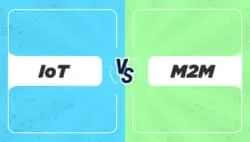

The Internet of Things has already become a fully-fledged partner in our daily routine, with smartphones, cars, Industrial remote access machines, medical device and other IoT products.
Technology is mainly relying on communication provided via cellular networks, while IoT/M2M products are products integrated with cellular components (chips, modules) for the purpose of this article.
Manufacturers developing IoT/M2M products should be aware of the regulatory requirements, has the spectrum is allocated and control Individually in each country = Market entry barriers = Sales.
This article will touch base on the differences between M2M to IoT in the mirror of regulation.
Terminology:
M2M: M2M communication, derives from telemetry technology and generally refers to data exchange between various devices usually through the Internet without human participation, and it involved an interaction between two or more machines without human intervention.
IoT: IoT is a mass market technology that applies to both consumers and enterprises.
Consumer IoT connects people to their devices and similarly, allows for remote control over those devices. The idea of the Internet of Things However is having evolved on the foundations laid down by M2M. On the other hand, IoT relies on standards-based IP networks to interface device data to a cloud or middleware platform.
Spectrum allocation, for cellular bands & technologies in this case, is controlled by the government, mainly by Federal/State/Country Ministries of Communications & Telecom authorities ( e.g. FCC, ISED, Anatel, MiC…).
Therefore, as a manufacturer of a products integrated with a cellular, you should be aware to market entry barrier which could block you in the custom.
Points for thinking:
– IoT or M2M product definition – For M2M some authorities may ask for a license.
Think about what you adding to your marketing materials!
– Modules certification
Have you verified if the Integrated modules are certified vs. the target market?
If they are? Are they up to date with amendment certification requirements?
Not taking it into consideration will have an impact on the final hist device certification = R&D efforts, TAT, costs – a lot!
– Product certification
Have you taken into consideration modules certification condition while integrating into a final host device?
The responsibility in face of law is of the manufacturer and distributor.
An example: FCC SUPPLIER’S DECLARATION OF CONFORMITY
– Others ……
To conclude, don’t start product development without understanding the regulatory impacts on your design, marketing and sales efforts. You could waste a lot of time and money.
Contact 360Compliance experts for further explanation & support.
You may also be interested





